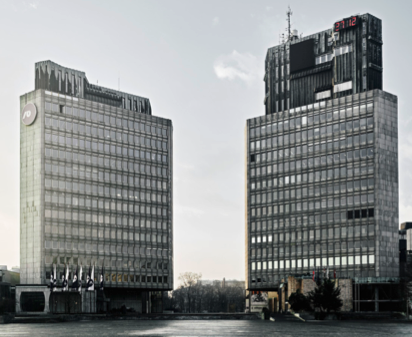Wednesday, December 5, 2018 - 12:00pm
Room 202, Frick Fine Arts
“A Review of the MoMA Exhibit ‘Toward a Concrete Utopia: Architecture in Yugoslavia, 1948–1980’ and its Context”

Toward a Concrete Utopia: Architecture in Yugoslavia, 1948–1980, is the first MoMA exhibition to focus exclusively on the architecture of post-war Yugoslavia.
Yugoslav architecture is largely unknown outside the geography where it was built, and one of the goals of the exhibition was to present its untold richness. Thus, the exhibition contributes to a better understanding of architectural history in Europe during the Cold War and begins to reposition Yugoslav architecture in the larger context of international modernism.
In this colloquium, Aleksandra Carapella will speak about works by the most notable figures in the exhibition, and their relationship to Joze Plecnik, one of the leading Central European architects of the twentieth century. In the MoMA exhibition, Plecnik is represented by one original model for the Slovenian Parliament known as the “Cathedral of Freedom” (1947). The model exemplifies Plecnik’s vision and would exert a strong influence on many Slovene architects.
Toward a Concrete Utopia: Architecture in Yugoslavia, 1948–1980 is on view until January 13, 2019.
Image: Edvard Ravnikar, Republic Square, 1960–74, Ljubljana, photography: Valentin Jeck, 2016
